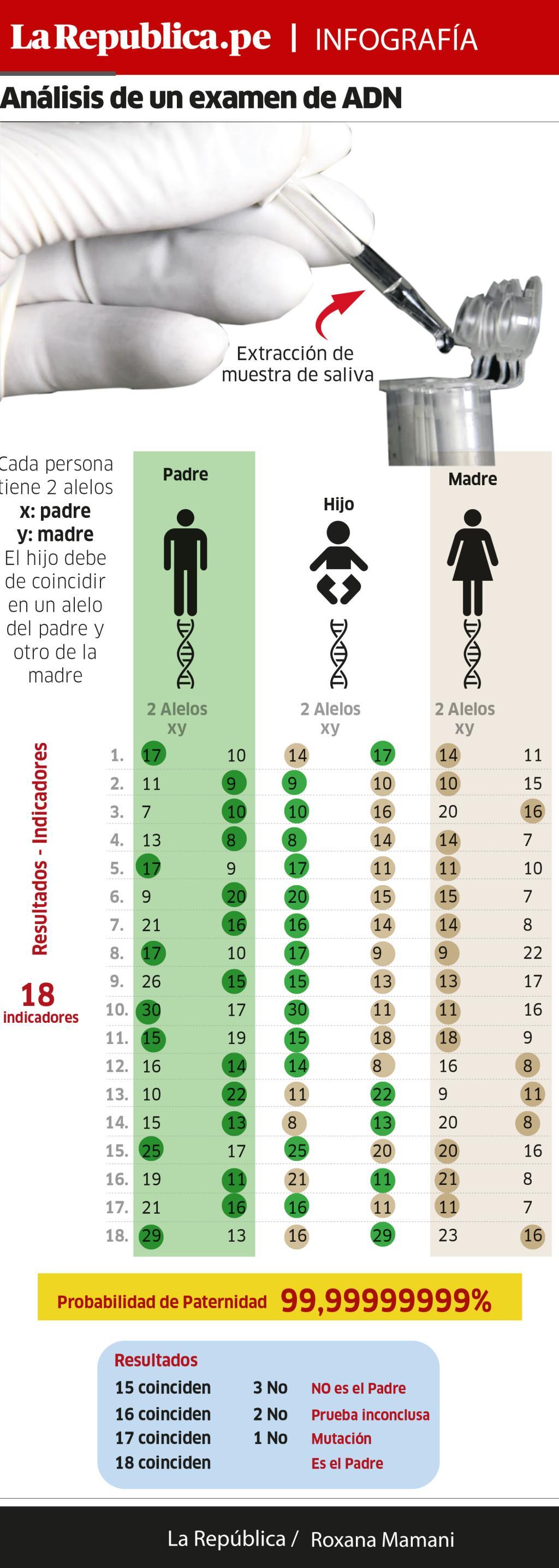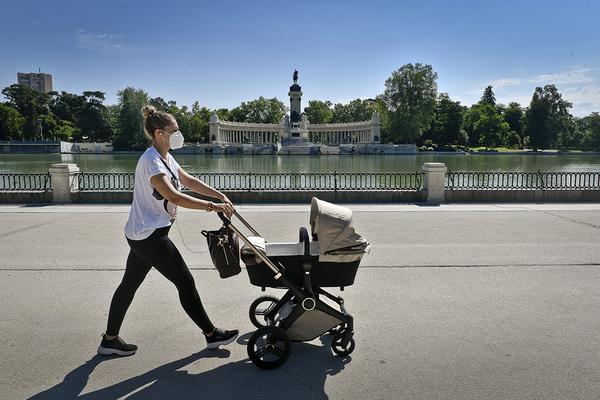DNA testing: the certainty of being parents if there are doubts
Alexis Choque Sarmiento
Arequipa. Two weeks ago, Victor Maldonado's case went viral on social media. This miner was credited with the paternity of a son who was not his and paid an unpaid maintenance allowance for 18 years.
A DNA test helped him know the truth. These types of tests ordered by a judge have a high level of reliability to confirm the genetic bond between two people.
Ronald was found nervous, sitting in the waiting room of a lab in Cayma district. Although he doesn't give details of his case, he waits for the results to find out if his ex-partner 's son is his.
In the laboratory, a professional who keeps his identity in reserve explains that the results of this test can last between 10 and 15 days. The samples are sent to other laboratories in the capital or abroad. This lab works with one from Panama. The ideal sample they perform for parents and children is cytological brushing, which consists of removing saliva from the sides of the mouth. Then the samples are sent in a sealed envelope to the lab and return after a few days.
When the DNA sample is taken from the mother, father and child, the chances are two: 0% (if not father) and 99,99999999% (eight 9 when confirming the bond). And if they only take it from the father and the child, the odds are 0% and 99.9999% (four 9).

The doctor explains that, in order to affirm a person's paternity, the 18 markers of the sample must be tested positive in the test. "it's like playing the lottery, all the balls must match to get the jackpot," he adds.
Markers are scientifically known as loci STR. Each one has a pair of alleles, one from the mother and one from the father. In the results, these alleles are represented by numbers. The two alleles that the child has must match one that the mother has and the other that the father has.
"if the 18 agree, it's definitely the father; if 15 match and 3 Don't, it's not the father; if 16 match is an unfinished test; and if 17 match and 1 doesn't, we can be talking about a mutation case," adds the doctor.
Mutation means that the mother of the baby may have had sex with a relative of the father. Discrete tests are commonly used in these cases. That is, blood samples are taken, eight hairs are removed, fingernails or even a semen sample and the STR loci increase to 27.
Discrete evidence is useful in any case, but that depends on the client if requested.
This lab has 10 to 15 clients. Of this amount, 70 per cent is negative and 30 per cent positive. The evidence is worth S / 1 200.
In another laboratory, in Yanahuara, they charge S / 1,400 for blood and saliva samples and S / 1,000 for only one of them.
According to the Arequipa judiciary, as of April this year, 1,441 parents were reported for maintenance. Fifteen Magistrates' Courts deal with these cases.
Long processes
Lawyer Juan de Dios Medina explains that a lawsuit for food may take more than a year and a half, due to the judicial burden. Although the High Court of Justice claims to pass a sentence in seven months.
When a mother submits the complaint, the alleged father has five days to apply for parenthood and undergo a DNA test. If the time limit is passed, the father may at any time initiate another prosecution for the challenge of paternity. "whether the father or not, the judge has arranged from the first day for a pension to pass because the baby cannot stop feeding," Medina says.







